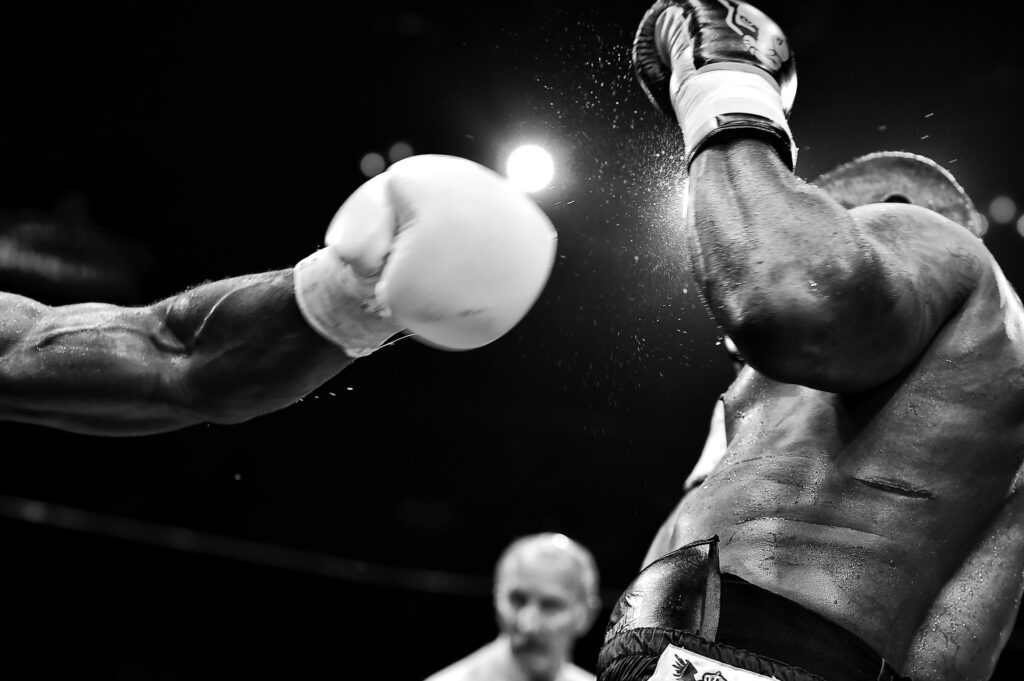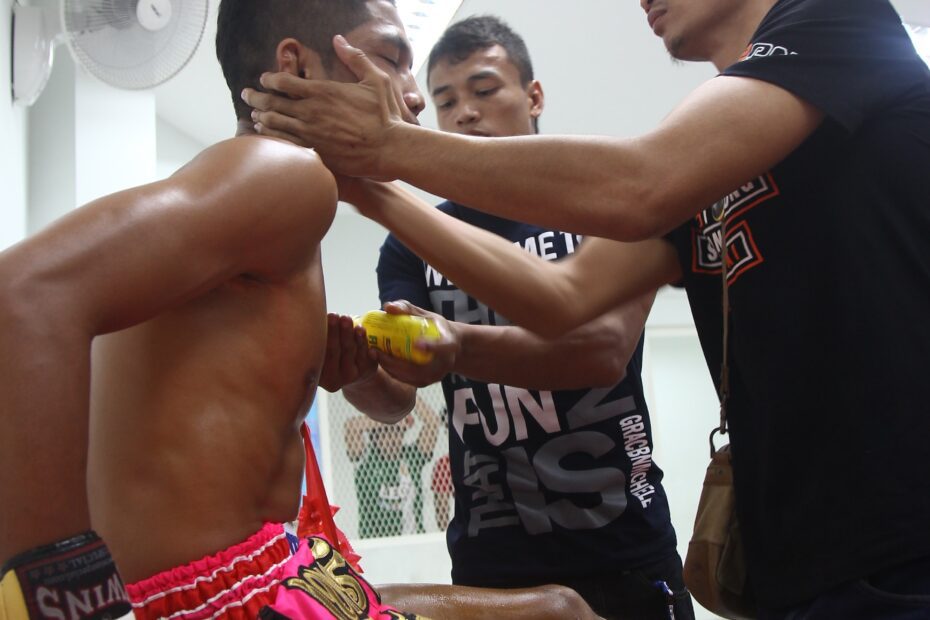Whether you’re new to combat sports or already have experience, it’s always great to take steps to prevent injuries. When you’re injured, you can’t train. You’re not able to compete to the best of your ability when you’re not healthy. All 10 tips you’ll read are focused on helping you stay sharp and safe. Before we cover preventative tips, we’ll go over what combat sports are as well as examples of different type of martial arts. Keep in mind that these tips aren’t impossible to follow and will yield the greatest returns when followed with consistency.
What are combat sports?

Combat sports are sports typically based in a martial art that has an organized aspect complete with rulesets. The sport aspect is different from the martial art itself since stoppage can be determined in a variety of ways such as points, knockouts, technical knockouts, submissions, and disqualifications.
Below are several examples of striking arts and grappling arts that have combat sports aspects to them. They’re all effective for self-defense in their own ways but are also used in a competitive sports context.
Examples of striking arts:

- Karate: There’s a good chance you’ve heard of this striking art with roots that go all the way back to Okinawa. Karate was initially developed as a form of self-defense and has since evolved into a competitive sport and a form of physical and mental exercise. As it spread to mainland Japan and other parts of the world, it was modified and adapted to suit the culture and climate of the region.
- Boxing: Western boxing is a popular combat sport with practitioners all around the world. It is a highly competitive sport that requires skill, strength, and endurance. It is also a sport that has produced some of the greatest athletes in history, including Muhammad Ali, Mike Tyson, and Sugar Ray Leonard.
- Muay Thai: Muay Thai is a form of martial arts that originated in Thailand. It is known as the “Art of Eight Limbs” because it uses punches, kicks, elbows, and knee strikes, thus using eight points of contact. Muay Thai’s roots go back to the 16th century and was used by the Thai military. Today, Muay Thai is a major sport in Thailand, and it is also popular in many other countries around the world. It is seen as a great way to stay fit and to learn self-defense techniques.
Examples of grappling arts:

- Brazilian Jiu Jitsu: BJJ’s foundational techniques can be found in judo and jujitsu. Brazilian jiu jitsu, as we know it today, started in Brazil in the early 20th century. Today, BJJ is practiced all over the world, from small local clubs to professional organizations. It has been featured in many movies and TV shows and has been used in MMA competitions. It is a very popular martial art for self-defense and fitness and has become a staple in many self-defense curriculums.
- Judo: This grappling art teaches fighters to battle for grips and effective throws. Judo originated in the late 19th century thanks to Jigoro Kano. Kano’s efforts to promote the art eventually resulted in it becoming a part of the Olympics. Judo dojos can be found all around the world from France to Mexico.
- Wrestling: A grappling style that can be used in MMA as well as self-defense situations. Wrestling is one of the oldest sports in the world, with its origins dating back to ancient civilizations. The sport was popular among the ancient Greeks, Romans, and Egyptians. In fact, wrestling was featured in the first Olympic Games. Today, wrestling can be found in grade school athletics and in gyms on different continents.
Use these 10 tips to prevent injuries in combat sports

Now that you have a better idea of what combat sports are, let’s go over 10 tips that will help you avoid injuries so you can keep training. All of the pointers on this list covers everything from sleep to strength training:
- Drink water and stay hydrated: There are so many benefits to drinking water and staying hydrated. Your body needs to water to be at its best. All of your basic body functions require water from increasing blood flow to getting rid of waste. You also need to stay hydrated to help you remember what you’re learning in class. Hydration also helps prevent cramps and assists you in recovery after a tough class.
- Sleep: Proper sleep is one of the most effective tools you can utilize as a martial artist and combat sports athlete. Sleep helps us learn new skills since our brain will work through the steps of each skill in our sleep. Getting enough rest each night also helps our bodies have time to repair itself after we train.
- Eat nutritious food: It’s tough to train and focus when you don’t have the right fuel in your body. Foods high in nutrition will help you have enough calories and nutrients to do everything from conditioning to sparring. Combat sports are very demanding so a continual investment in the right foods for you will go a long way towards helping you get the result you want and need.
- Do cardio: Increasing your aerobic threshold always works in your favor. When you’re fatigued, it’s tough to focus in class. It’s also difficult to focus on your techniques while sparring when your cardio is lacking. There are different ways you can improve your lung capacity including running, swimming, and rowing.
- Don’t skip strength training: Strength matters! Anyone who tells you it’s never a factor in combat sports is probably physically weak. Strength training provides you with several benefits such as injury prevention and better performance overall. You’ll also be able to increase your explosiveness and ability to deal with higher intensity training sessions.
- Take time to drill: Drillers make killers. Consistent drilling helps be more familiar with your body, how it moves, and how you move in different scenarios. Moving through different positions and movements while drilling helps you get those repetitions in which help you not overthink or stress as much during competition.
- Ask for help during class: One of the best parts of the martial arts community is the opportunity to learn from others. You don’t have to be stuck in your progress. Ask your coaches and more experienced teammates for help. This will enable to you move with confidence and avoid injuries.
- Take care of your training partners: Your training partners are your greatest asset. Know who you can train hard and when you need to dial back the intensity. One of the best ways to make this happen is to continuously communicate with your training partners on how you’re doing and what your goals are.
- Invest in self-care: Pay attention to what your body needs and do it. For example, go get a massage if it makes sense for you. Take a nap if you’re tired to recover. Schedule an appointment and see a physical therapist if you have injuries that need special attention.
- Take breaks when needed: There are times where you will simply need to rest and take a day off from training. On these days, take some time to do activities that will also allow you to refresh your mind. Some of these activities include hiking, drawing, and working on side projects around your home. Breaks that enable you to engage your brain in a different way help you feel better and will empower you to be more creative when you’re back to training.
Which of the tips listed above have you heard of? All the 10 tips above are shared with the goal of helping you achieve your combat sports goals which staying safe. As you implement them into your training, you’ll be able to improve your performance and start making real progress towards your goals.
Go train!
If you’ve been wanting to get your martial arts journey started, now is the time! Whether you’re wanting to compete or simply learn a new skill, combat sports like Brazilian Jiu Jitsu and boxing are a great way to get in shape, learn self-defense, and be the best version of yourself. Here are a handful of benefits you receive by learning a combat sport.
Benefits of learning a combat sport
- Increased physical fitness and conditioning
- Increased self-confidence and self-esteem
- Improved discipline and focus
- Increased ability to defend oneself in a physical altercation
- Increased socialization and networking opportunities
It’s up to you to make the decision to start training. Make the decision today and reap those benefits for you. Let us know in the comments which combat sport you’re interested in!
